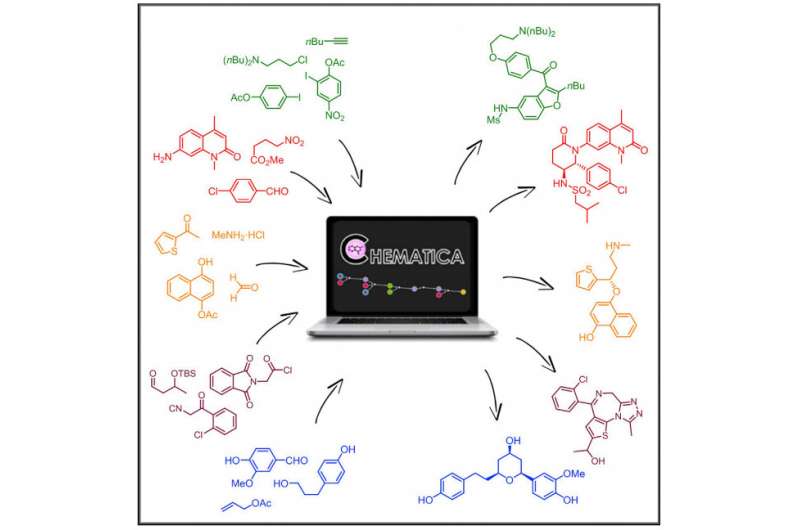March 5, 2018 report
Chemists test Chematica's ability to generate synthetic routes

A team of chemists working for MilliporeSigma, a company that purchased Chematica, a computer program that generates synthetic routes (the series of reactions necessary for the creation of a synthetic target), has tested its abilities in a lab. In their paper published in the journal Chem, the group describes giving the software eight targets and reports on its performance.
In chemistry, designing a synthesis is labor-intensive, and therefore inefficient. It takes chemists with years of knowledge and practice, a large amount of time and effort to develop a reaction sequence that will result in the creation of a desired target. Thus, chemists have been wondering for years whether computers could do the task. Efforts have been underway since the 1970s, but thus far, the results have been unimpressive. More recently, a team working on the algorithms for Chematica have reported promising results, which is likely why it was purchased by MilliporeSigma last year. In this new effort, one of the original creators of the program, Bartosz Grzybowski, along with others at MilliporeSigma and Milan Mrksich from Northwestern University, put the program through its paces to find out just how well it could generate routes.
The team chose eight targets (six by the MilliporeSigma team, one by Grzybowski and the other by Mrksich) with demonstrateda pharmaceutical potential. They report that the program took approximately 15 to 20 minutes to plan each of the synthetic routes, which also included reaction conditions. The team from MilliporeSigma carried out half of the test runs and the other four were carried out by grad students and postdocs. To test the results, the chemists needed to follow the routes to see if the the program could generate the desired target. The team reports that Chematica successfully created routes for all of the targets it was given. In addition, for seven of them, the program created routes with fewer steps, improved yield, better time or lower costs than routes created previously by chemists. For the eighth, the program produced a route that resulted in the first synthesis of the desired target.
More information: Tomasz Klucznik et al. Efficient Syntheses of Diverse, Medicinally Relevant Targets Planned by Computer and Executed in the Laboratory, Chem (2018). DOI: 10.1016/j.chempr.2018.02.002
Summary
The Chematica program was used to autonomously design synthetic pathways to eight structurally diverse targets, including seven commercially valuable bioactive substances and one natural product. All of these computer-planned routes were successfully executed in the laboratory and offer significant yield improvements and cost savings over previous approaches, provide alternatives to patented routes, or produce targets that were not synthesized previously.
Journal information: Chem
© 2018 Phys.org



















